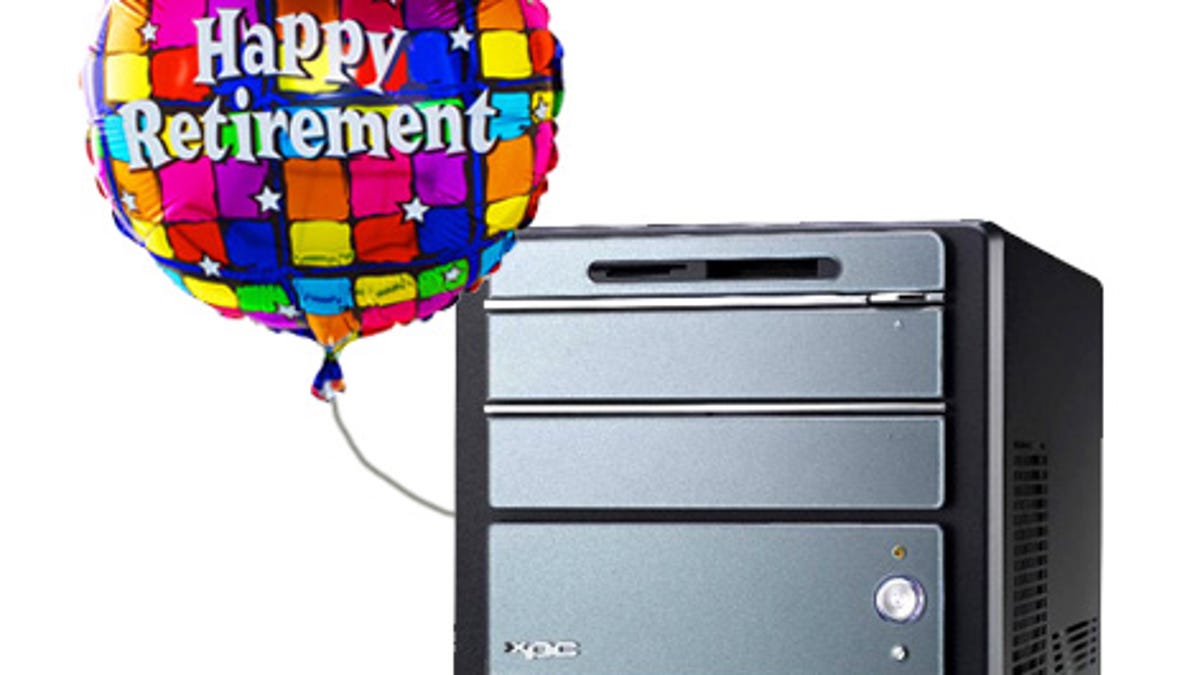Why I mothballed my media center PC
As a longtime advocate of hooking a PC up to a big-screen television, I was more than a little surprised to find myself recently pulling the plug on my media center PC. Here's why it happened.

With Google's announcement of the Google TV platform, there's a new potential light at the end of the tunnel for those looking for an easy way to get Web-based content on their living-room TVs. But for those of us who are fans of doing things the not-so-easy way, the concept of playing video files or surfing the Web via TV is nothing new, as we've been doing it through off-the-shelf or custom-built media center PCs for years.
Yet, as a longtime advocate of hooking a PC up to a big-screen television, I was more than a little surprised to find myself recently pulling the plug on my media center PC. There was nothing physically wrong with the home-built Shuttle small form factor system (actually the third media PC I had put together over the years), it was just that new technologies for consuming media content had made it largely superfluous.
With somewhere between seven and 10 devices hooked up to my plasma at any one time, any chance to simplify is welcome, especially as the media center PC was the only device in the mix not controlled by my
For playing downloaded video files, we used to drag them to the media center PC's hard drive over our home network, and play them via VLC media player, using a Gyration gyroscopic mouse, which acted as a clever gesture-based media playback controller. The occasional ABC.com episode of Lost or CNET TV video was played in the same manner via Web browser.
But the media center PC was used most often as a Netflix streaming box; and once that technology came to the Xbox 360 (and later the PS3 and Wii), it lost a major reason for being.
I managed to replace the next two most common media center PC tasks with a single piece of software. Hulu video streaming and downloaded video file playback were both taken over in my home theater by the incredibly useful PlayOn media server app, accessed through the Xbox 360 (and less frequently, the PlayStation 3).
PlayOn is basically a software server that sits on your home PC, and transcodes a variety of video content to a compatible device (such as a game console) on your home network. It provides for Hulu streaming, but also handles Amazon on Demand video, some of the broadcast network video streams, and even Netflix (which we admit is kind of pointless now).
It's hard to overstate how useful this program is, especially for video playback. If you've ever tried to connect your game console to your home network for video streaming, you know what an exercise in frustration that can be, with connection errors, ridiculous code registrations, and incompatible file formats. With PlayOn, just drop the video files in a selected folder on the computer hosting the program, and you're all set. We've had no problem playing files over Wi-Fi, but the shuttle controls--fast-forward and rewind--can be a bit finicky.
The interface admittedly isn't much to look at, as it mimics the folder-driven file structure used by the Xbox and PS3; you'll be doing a lot of clicking and navigating to look up Hulu shows from the alphabetical folder list.
With PlayOn, the Netflix game console apps, and Last.fm music streaming (and specialty services such as the PS3's live Major League Baseball games), there's very little we used our media center PC for that hasn't been replicated elsewhere. The main missing ingredient is a decent Web browser; the built-in PS3 one really doesn't cut it.
With all these other options available, it was only natural that my media center PC would eventually become the odd man out, and lose its precious roost in my media cabinet.
Unfortunately, this story doesn't have the happiest of codas. If you're interested in trying out PlayOn, the company has just switched from a perfectly reasonable one-time $30 license purchase to a much-maligned subscription format of $40 for the first year, and $20 for each year after.
It's the oldest story in the book. A company makes a compelling, useful product, but it's almost too good, because you only need to make a one-time purchase and you're set. There's no recurring revenue for the seller, and no chance to rope you into a monthly or annual subscription (which can be a cash cow for anyone from Xbox Live to antivirus software to World of Warcraft).
Current users can keep their basic PlayOn media app, but new customers will have to either pony up for a subscription (which includes Web-streaming channels for Comedy Central, PBS, and others), or after a 14-day free trial, only get access to the local media streaming features (no Hulu, no Amazon on Demand, etc.).
Even with this unfortunate subscription model switch, I'm still comfortable with my decision to retire the media center PC. Considering the media streaming features of the current generation of game consoles, the still-useful PlayOn software, set-top boxes from companies like Roku, and Google's new TV initiative (not to mention TVs that actually include online streaming themselves), there are more than enough options to take care of 99 percent of my media needs without requiring another keyboard, mouse, or operating system install.
That said, we wish our old media center PC a happy retirement. It'll be sent to live on a horse farm in the country, with plenty of sunshine and fresh air--at least until we need to strip it for parts.

